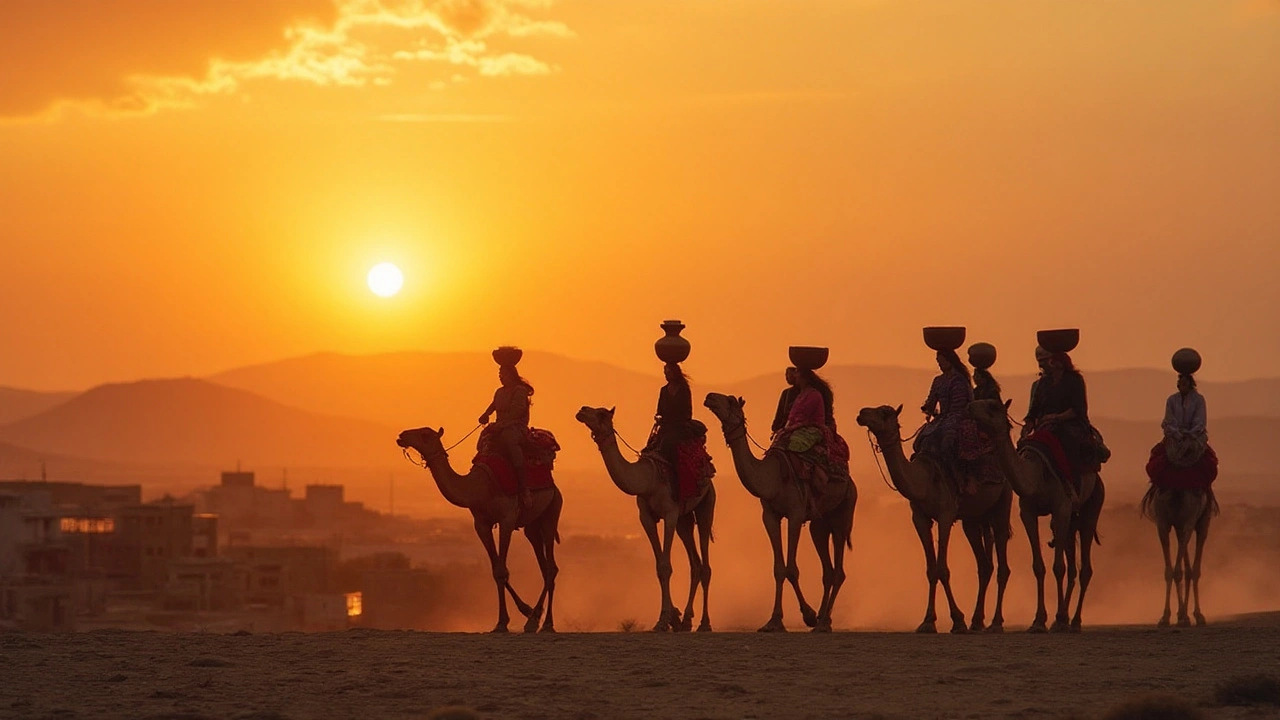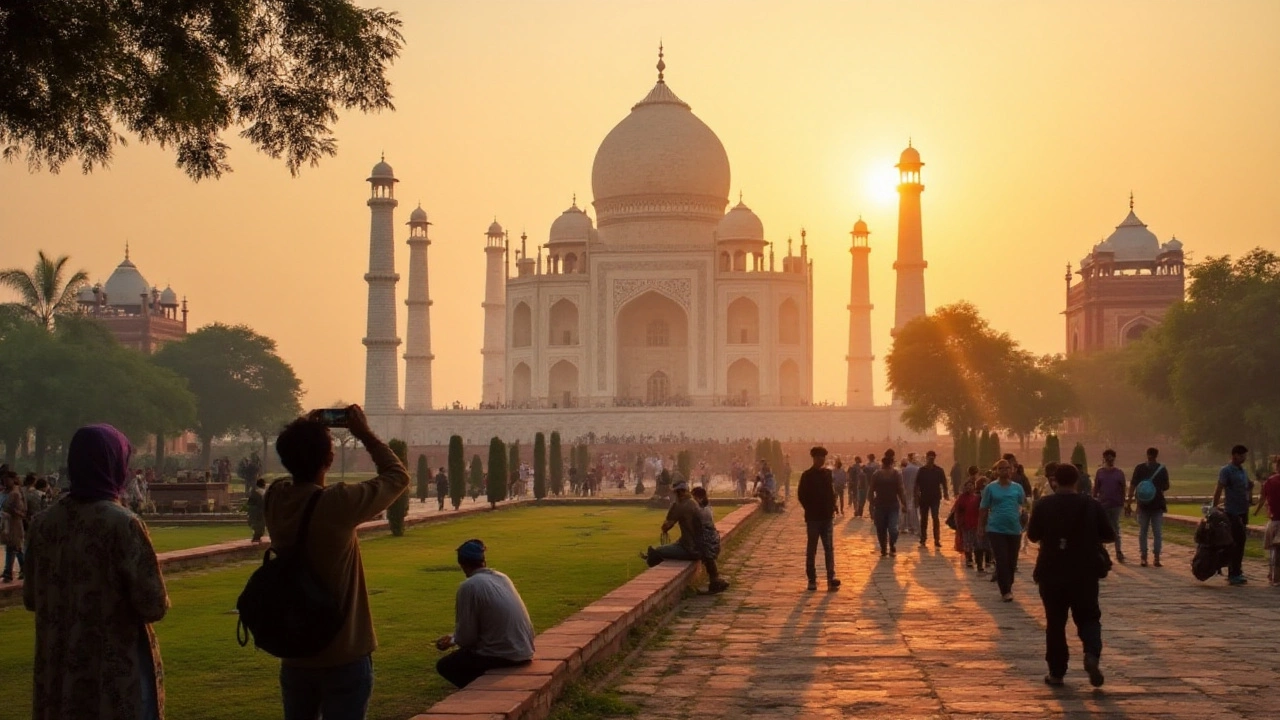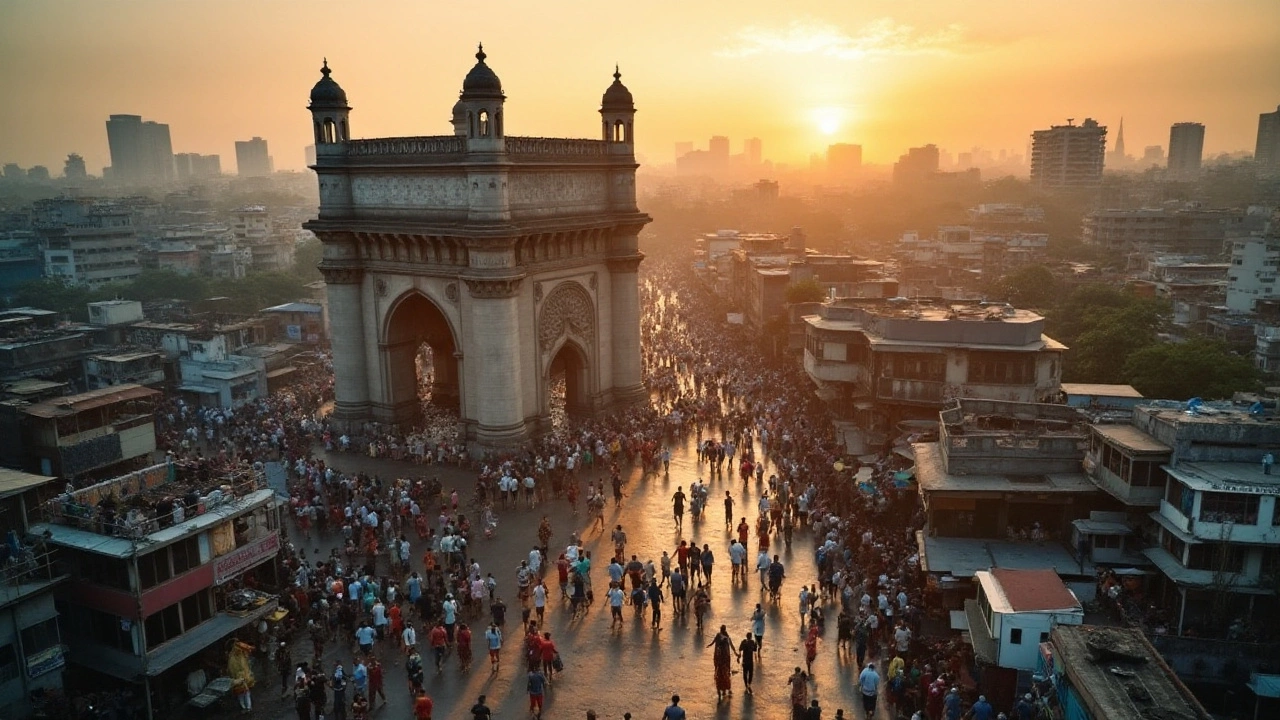India is a land of contrasts and immense diversity. The vibrant cultures, rich history, and exceptional landscapes make it a fascinating destination for many. But figuring out how many days to spend, especially when on a budget, is a bit of a puzzle. There's so much to see and do, and it all depends on what you want from your trip.
We've got the inside scoop on the best strategies for an enriching yet affordable journey through this incredible country. Whether you plan to explore sprawling metropolises, tranquil countryside, or historic monuments, getting your itinerary just right is crucial. Read on to discover more about making the most of every day in India without spending a fortune.
- Understanding India’s Diverse Landscape
- Key Regions to Visit on a Budget
- Sample Itineraries for Budget Travelers
- Tips for Saving Money While Traveling
- Cultural Immersion Without Breaking the Bank
Understanding India’s Diverse Landscape
India stretches across a mosaic of terrains and climates, offering an enticing mix of experiences for any India travel enthusiast. From the soaring peaks of the Himalayas in the north to the sunlit beaches of Kerala in the south, this vibrant country is home to deserts, forests, rivers, and plateaus. Each region has its own unique charm and stories to tell. The vast plains of the Ganges River host a thriving agricultural heartland, while the dramatic landscapes of Rajasthan’s desert hold ancient palaces and bustling markets. One could spend weeks here and merely scratch the surface of what India has to offer, highlighting why determining how many days in India is ‘enough’ can be challenging.
The urban tapestry encompasses cities like Mumbai, which buzzes with energy and creativity, and Delhi, where ancient history rubs shoulders with modern life. Then there's Kolkata, offering a poetic chaos and a rich cultural backdrop. Each city tells its own story through architecture, culinary delights, and local traditions. Venturing out of the cities, travelers can find peace among the sprawling tea gardens of Assam or alongside the serene backwaters of Kerala. India offers something for every traveler, from those seeking adventure in the mountain ranges to those looking for tranquility in the coastal towns.
What truly sets India apart is its astounding cultural diversity. With over 2,000 distinct ethnic groups and more than 1,600 languages spoken, the culture is as varied as the landscape. This diversity deeply influences the art, music, dance, and religion seen throughout the country. The festivals, a kaleidoscope of colors, sounds, and flavors, are an integral part of Indian life and present an immersive experience for tourists. Whether it's Holi's riot of colors or Diwali's festival of lights, these events provide a peek into the vibrant heart of the nation.
Travelers on a budget can make the most of their visit by navigating the network of trains that form one of the world's most substantial railway systems. Not only is this an affordable way to move around, it's also a chance to witness the diverse beauty of India's landscape unfold. Despite offering numerous modes of transport, including buses and flights, the Indian Railways remain a favorite for many budget travelers due to timely services and unique travel experience. A piece from National Geographic once noted,
"Traveling on India's trains is like traversing a tapestry woven with the threads of countless stories."
For those eager to explore the cultural and natural aspects of India without straining their pockets, prioritizing regions based on interest is advised. The north showcases the majesty of the Himalayas, perfect for adventure seekers, while the south is favored by those searching for spiritual retreats or picturesque beaches. Each region has invaluable attributes, and with a strategically planned itinerary, one can capture the essence of India’s extraordinary diversity without missing out due to budget constraints. With an appreciation of this varied landscape, you are not just visiting a destination, but embracing a journey full of surprises and splendors.
Key Regions to Visit on a Budget
Embarking on a journey through India can be splendidly cost-effective if you know where to go. The sheer size and diversity of India offer countless opportunities for budget-minded travelers to dive deep into the country's vibrant cultural tapestry without draining their wallets. India travel need not be an expensive affair, and with some planning, you can cover a lot of ground economically.
One of the most beloved regions for budget travelers is Rajasthan. Known for its majestic palaces, forts, and the vibrant culture of the desert, Rajasthan is a place where ancient history and lively traditions come alive. Cities like Jaipur, Jodhpur, and Udaipur are not only historically rich but also offer affordable accommodations and meals. It's common to see backpackers exploring the narrow lanes of markets or taking a cheap local bus to the next town. In Jaipur, don't miss the chance to visit the majestic Amber Fort, which is a sight to behold at sunset.
Moving on from the deserts, the Himalayan foothills offer breathtaking views and a serene escape. The state of Himachal Pradesh provides scenic beauty and tranquility combined with affordability. Towns like Manali, Dharamshala, and Shimla boast charming landscapes and adventure sports. Here, guesthouses offer clean, comfy rooms at reasonable prices, perfect for travelers wanting to explore the mountains without breaking the bank. If lucky, you might even catch a local festival, where the entire community comes together to celebrate—a spectacle that's free yet priceless to experience.
Heading to the south, Kerala, often termed as "God’s Own Country," is a treasure trove of natural wonders. It's also an excellent destination for budget travel itinerary in India. From its mellow beaches like Varkala to the serene backwaters around Alleppey, Kerala provides a lush and laid-back vibe. You can enjoy houseboat cruises at budget rates if you book in advance or opt for shared cruises. Plus, local homestays offer an intimate glimpse into the culture while being immensely wallet-friendly. For those interested in wellness, affordable Ayurvedic treatments are available in abundance.
For history buffs and city explorers, Delhi and Agra form a part of the iconic Golden Triangle, which can be navigated thriftily. Delhi's chaotic charm, with its blend of historical sites like the Red Fort and Qutub Minar, pairs well with budget accommodations in places like Paharganj. In Agra, the majestic Taj Mahal awaits, and if you're willing to venture a bit further, the deserted city of Fatehpur Sikri makes for an enriching day trip, often overlooked by the typical traveler.
According to Lonely Planet, "Traveling in India on a shoestring budget is very doable. With careful choices, you can have an experience as enriching and enthralling as those with larger budgets."
Lastly, West Bengal's Kolkata is a city that beautifully marries the past with the present. Known for its colonial architecture, vibrant arts scene, and delicious street food, Kolkata invites budget travelers with open arms. The city's excellent public transport system further lessens travel costs, and local eateries deliver some of the most tantalizing Bengali flavors without the hefty price tag. The feeling of watching the sunset along the Hooghly River, surrounded by the buzz of local life, is magical and totally free.
As you plot your journey through these key regions, remember that traveling in India doesn't mean skimping on experiences or comfort. Instead, it's about making wise choices to experience more with less. Let these regions charm you with their stories, flavors, and colors, all while keeping your budget intact. So pack your bags and prepare for an unforgettable adventure!

Sample Itineraries for Budget Travelers
Planning a budget trip to a vast country like India can seem daunting, but with a little guidance, it can be an adventure of a lifetime without breaking the bank. The key is to tailor your itinerary to include the most captivating destinations while keeping an eye on costs. One popular option is the Golden Triangle route, which covers Delhi, Agra, and Jaipur in about a week. This classic route offers a glimpse into India's rich culture and architectural brilliance.
Starting in Delhi, you can explore bustling markets, historic sites like Red Fort, and taste the vibrant street food that captures the essence of India. A trick to save money in Delhi is to rely on public transportation such as the metro. After acclimatizing to the energy of the city, a train ride to Agra invites visits to the magnificent Taj Mahal, Mehtab Bagh, and Agra Fort. Remaining budget-conscious requires booking train tickets in advance and bargaining at local shops for souvenirs.
Next, the trip moves towards Jaipur, known as the Pink City, where you can immerse yourself in the fabled stories of royal India. Witness the architectural wonders at City Palace and Hawa Mahal. To keep travel costs down, consider staying in budget hotels or hostels, which often help with finding affordable city tours. A week in the Golden Triangle might be short but it's packed with iconic sites and experiences that offer incredible value.
If time permits, a two-week trip could include traveling south to explore Kerala's backwaters. Kerala offers a different pace of life with serene landscapes, and you can navigate the waters with houseboat trips that fit modest budgets. Another option lies in the north, where beautiful places such as Himachal Pradesh or Rishikesh invite those who love nature and adventure. These areas are rich in hiking opportunities and yoga retreats, both of which can be surprisingly affordable.
For those yearning to go off the beaten path, consider an itinerary that takes you through less touristy places like Varanasi, where spiritual rituals on the Ganges River provide a glimpse into the spiritual side of India. Traveling by train overnight can save on accommodation costs, making longer itineraries more manageable. Emphasizing train travel over flights is one way to preserve funds, as is indulging in local cuisines instead of dining at high-end restaurants.
Creating a budget-friendly itinerary in India isn't just about scrimping and saving—it's about making strategic choices to experience the country's rich tapestry of experiences. As travel writer Pico Iyer aptly put it,
"We travel, initially, to lose ourselves; and we travel, next, to find ourselves."Let your itinerary be a guide through India’s bewildering beauty, helping you lose the stress of planning and find the joy of discovery.
Tips for Saving Money While Traveling
Traveling to India on a budget is not only possible but also incredibly rewarding. The key to minimizing expenses starts with how you plan your journey. Understanding how to make the most of your rupee can lead to richer experiences without financial stress. Begin by considering transportation options; public transport like local buses and trains is not only economical but offers a glimpse into the daily lives of locals. Plan your routes carefully to take advantage of discounted train passes like the Indrail Pass for tourists, which offers unlimited travel over designated periods. Accommodations also play a significant role in budgeting, and India has a wide range of inexpensive options. Hostels and guesthouses are commonly found and come in a range of prices. Often, staying just a bit outside tourist hotspots translates to better rates and quieter surroundings.
Food is another area where you can save substantially. Eating like a local doesn't just save money, but also introduces you to the myriad of flavors that Indian cuisine offers. Street food is both cheap and delicious—be sure to visit busy stalls where the turnover is high. However, always prioritize hygiene and choose vendors who display good cleanliness practices. When dining at restaurants, look for 'thali' meals which offer a variety of dishes at excellent value. In addition, using digital tools can help you track and control your spending. Various travel apps provide insights into lesser-known spots where you can get great deals on meals and activities. These resources can be invaluable in finding hidden gems that don't attract the same crowds as famous tourist sites.
For those keen to immerse themselves deeply in Indian culture, volunteering opportunities can be exchanged for room and board. Websites like Workaway or Worldpackers list numerous hosts who offer such arrangements. This approach not only saves money but also allows for deeper cultural engagement. Additionally, it's wise to keep an eye out for free events and festivals happening during your stay. India is known for its vibrant festivals, from Diwali to Holi, where the celebrations are public and welcoming to tourists. While the experience is rich and fulfilling, the cost to participate is often none.
Lastly, carry cash as it's often more practical in India, especially in rural areas where digital payments might not be accepted. However, don't carry large amounts; instead, withdraw small amounts as needed to avoid hefty exchange fees or loss. Staying conscious of your spending without missing out on enriching experiences is achievable with a bit of foresight and careful planning. Remember the words of Mark Twain:
"Travel is fatal to prejudice, bigotry, and narrow-mindedness, and many of our people need it sorely on these accounts."Embrace the spontaneity and richness of India with these budget-friendly tips to create lasting memories without straining your wallet.

Cultural Immersion Without Breaking the Bank
Experiencing the rich tapestry of Indian culture doesn't require a hefty budget. In fact, some of the most authentic and enjoyable experiences come at little to no cost. One of the best ways to immerse yourself in local life is to participate in the many festivals that take place throughout the year. Festivals such as Diwali, with its vibrant lights and joyous atmosphere, and Holi, the unforgettable festival of colors, are celebrated nationwide and offer a glimpse into the heart of India's cultural traditions. Each region may have its own unique twist on these celebrations, allowing you to witness a variety of customs and arts. Connecting with local people during these times can also lead to heartwarming exchanges and lasting friendships, which are invaluable aspects of travel.
Another pathway to cultural immersion is exploring the diverse culinary landscape of India. Street food in bustling markets is both budget-friendly and delicious. Savor a spicy pav bhaji in Mumbai, relish the tangy puchka in Kolkata, or enjoy a flavorful dosa in Chennai. These dishes are often more than just meals; they are stories of regional history and local pride. Many markets and street vendors are happy to share the stories behind their family recipes, giving insight into communal traditions and ways of life. For those who wish to dig deeper, joining a cooking class is an educational experience that can be surprisingly affordable, providing not only a meal but also the skills to recreate it back home.
India's extensive rail network, one of the largest and busiest in the world, offers another budget-friendly adventure. Traveling by train is more than just a way to get from point A to B; it's an opportunity to see the countryside and engage with locals in a unique way. As you sit in the carriage, watching the scenery change from bustling cities to tranquil villages and sweeping rural landscapes, you can strike up conversations with fellow travelers, sharing your experiences and learning from theirs. It's not uncommon to hear tales of personal journeys and receive advice on hidden gems off the usual tourist path. Stay open and receptive, and you might find yourself invited to family gatherings or community events, extending your cultural immersion even further.
Catherine M. Bell, a noted travel writer, once said, "Traveling through India by train is like reading its soul. Each station is a new chapter, and every person you meet tells a different story."
Volunteer work is also a meaningful way to connect with the country. Numerous non-profits and community organizations offer short-term projects where help is needed. Whether it’s teaching English, working in conservation, or assisting in community development, volunteering provides a fulfilling way to give back while gaining a profound understanding of local life. Many of these opportunities will also grant you accommodations, making it an economical way to experience cultural exchange.
Moreover, attending cultural performances such as classical music concerts, dance shows, and theatre can enrich your understanding of India's art scene without significant expense. Many cultural centers and universities in India offer free or low-cost access to these events. A walk through the old cities with a local guide can open doors to historical narratives you wouldn’t find in guidebooks. Many cities organize free walking tours, highlighting their historical and cultural landmarks. As you wander through the narrow lanes of Old Delhi or past the grand architecture of Jaipur, you'll find yourself swept away by the stories these places hold.
